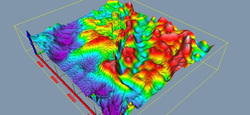A Ground Penetrating Radar Survey, commonly referred to as a GPR survey, is a geophysical locating technique which makes use of radio waves to take images of entities below walk out without digging up the soil. The objects that need their images captured shouldn't be too far in to the ground (only tens of metres below surface level). Additionally, the further down the region surveyed is, the low the quality of the image taken will be. There are various ways a GPR system could be set up nonetheless it all depends on the goal of using it.

Exactly what is a Ground Penetrating Survey Useful for?
GPR Surveys are used to discover the exact location of natural or man-made objects underground, natural elements or detect changes in the position of those objects. For example, surveyors may use them to detect changes in the soil profile, pockets of air, the layout of underground pipelines, rocks, groundwater tables & other geological features, etc.
It functions by sending high-frequency (50 ? 1,500MHz) electromagnetic pulses into the ground to take the needed images. GPR systems have two key pieces of equipment; the transmitter and the antenna. The transmitter ? which would be close to the ground ? would send radar signals into the ground, and the signals reflected would be detected by the antenna. The signals received would be processed and shown on a graphic recorder. Furthermore, as the transmitter and antenna pair are moved over the earth?s surface being surveyed, the graphic recorder would generate a radar or cross-sectional image of the earth.
What to Expect from a Ground Penetrating Survey?
The result of an effective GPR Survey are lines of data that represent the sectional view of the earth?s subsurface. GPR Surveys Stonehouse collected in an area would be come up with and used to create a 3D image of the surveyed area. https://postheaven.net/construction323/where-can-gpr-be-used from the Ground Penetrating Radar can detect and capture images of concrete, plastic, natural materials, metal, etc.
